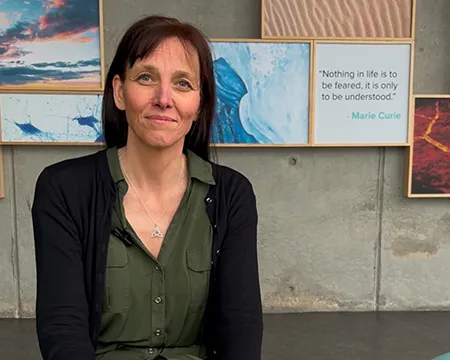The Science of Skin Colour

Have you ever wondered why people have different skin colours? The answer is more complex than you might think! Skin colour has been a subject of fascination and curiosity for centuries. It has often been used to categorise people into different races, which has led to the perpetuation of racism and discrimination. But the science behind skin colour is much more complex than the surface level differences we see.
The Biology of Skin Colour
Human beings are all one species – Homo sapiens, the last surviving species of human. We have shared our planet with at least eight other species of human, possibly even more.
As modern humans began to migrate out of Africa over 100,000 years ago, they encountered diverse new environments and began adapting to these climates. Those who lived in hotter regions faced a new challenge: how to protect themselves from the harmful effects of the Sun’s ultraviolet (UV) rays. Evolution’s solution was to develop pigments in the skin which darkened over time and provided a natural barrier against skin damage and cancer.
An important pigment for skin colour is melanin, produced by specialist cells called melanocytes. Melanin in skin comes in two forms, eumelanin, which gives skin a darker brown/black colour and pheomelanin, which gives skin a red/yellow colour. The amount and type of melanin our bodies produce is determined by our genetics and influenced by environmental factors, such as exposure to sunlight.
Melanin gives colour to your eyes, skin and hair and absorbs harmful UV rays, protecting your cells from damage. People who live in areas with high levels of sunlight, such as nearer the equator, tend to have darker skin than people who live in areas with lower levels of sunlight, like here in Scotland.
Skin Colour and Racism
The concept of race, based on skin colour, was invented in the 18th century to justify colonialism and slavery. This belief in the superiority of one race over another has led to systemic racism and discrimination throughout history. People have been denied basic rights and opportunities simply because of the colour of their skin and even today, skin colour is still used to discriminate against people in many areas of life, including education, housing, and employment.
Why Science and Racism are Incompatible
The use of skin colour to create a hierarchy is not supported by science. The biological differences between people of different skin colours are minor (between any two humans the amount of genetic variation, or difference, is around 0.1%), and do not justify the unequal treatment of people based on race. The concept of race is a social one, not a biological one, and has no basis in science.
Science is based on evidence and facts, not on stereotypes and prejudices. Racism goes against the very principles of science, which values objectivity and impartiality. Racism has a negative impact on scientific progress, limiting the diversity, perspectives and ideas that are needed to make breakthroughs in science. It also leads to the underrepresentation of people of colour in science, which can result in biased or incomplete scientific findings which do not accurately reflect the diversity and complexity of human experience.
Further Information
This blog post by Sally White is adapted from an article by Glasgow Science Centre that first appeared in Glasgow Times in September 2023.
Black History Month at Glasgow Science Centre
This October we will be celebrating Black History Month and the black contributions to science in several exciting ways.
African Skies, our bespoke planetarium experience will have public showings on selected dates in October. Join us to learn about the night sky in Africa, the importance of stars for enslaved people and the contributions of black scientists and mathematicians to the space industry. We will also have screenings of the award-winning blockbuster, Hidden Figures in our IMAX Theatre.
Our dedicated community team will be offering The Science of Skin Colour workshops to local community groups, exploring our differences, similarities, and evolution, and creating a display to represent the colours of our diverse and vibrant community. If you’re part of a community group and would like to get involved in our shows or workshops, please get in touch [email protected]






